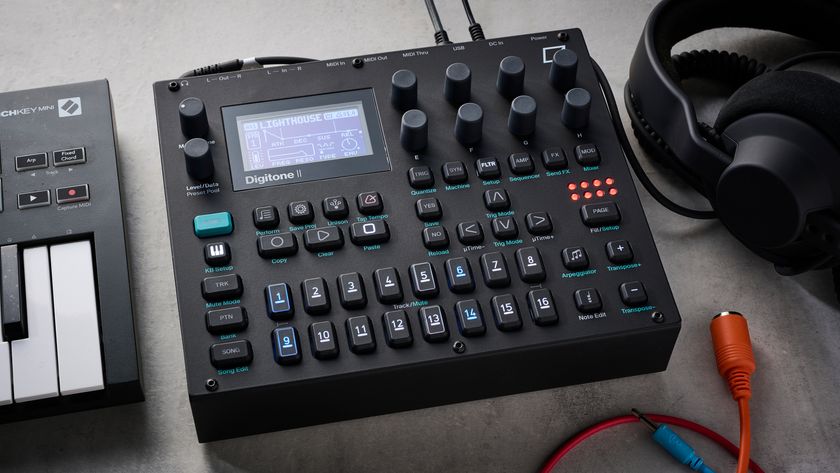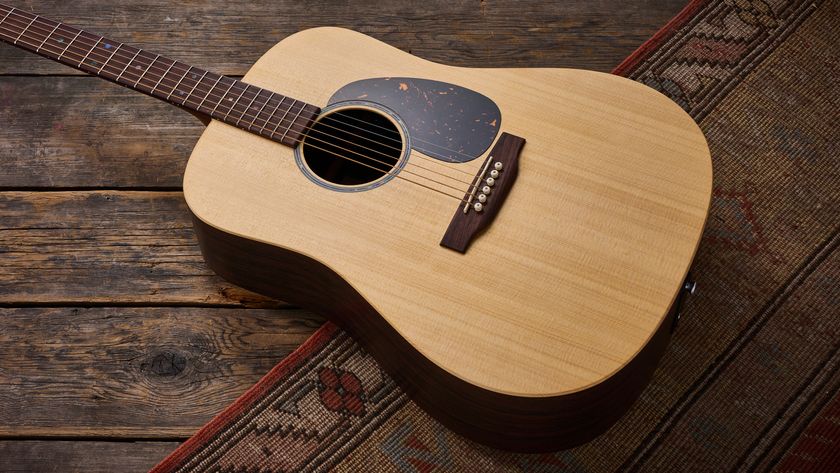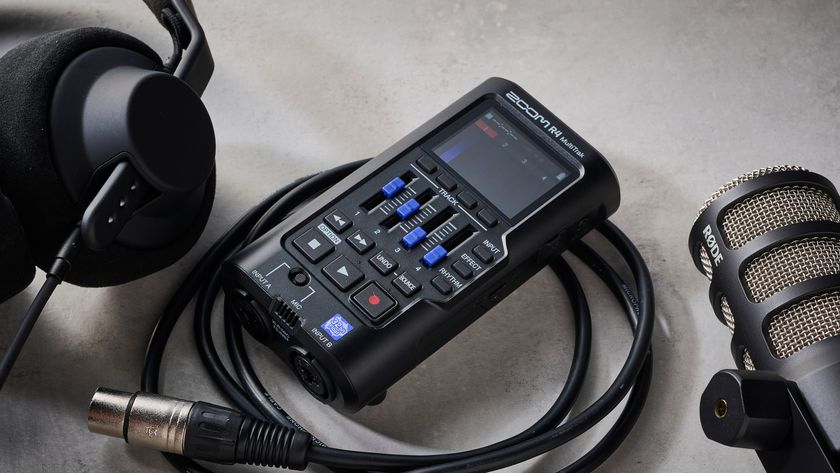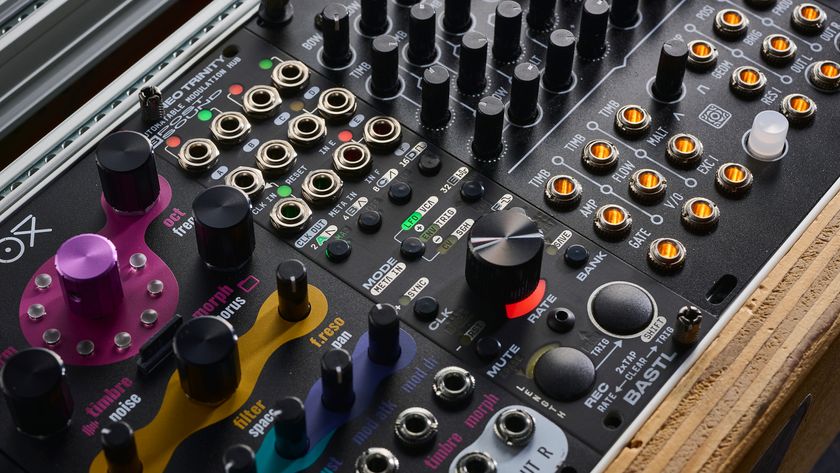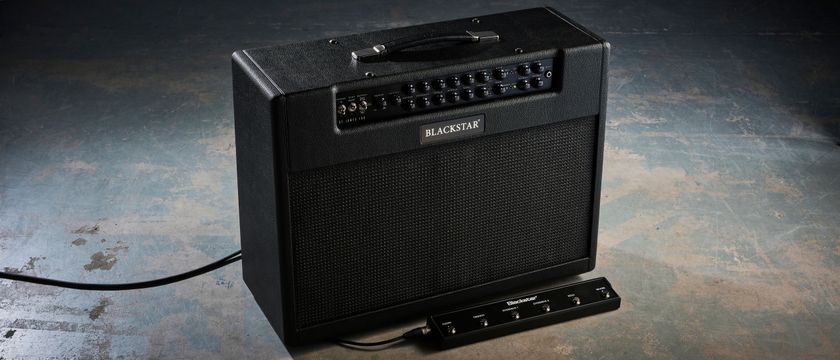MusicRadar Verdict
Powerful, meaty sounds in a compact, control-friendly package. The microX comes highly recommended.
Pros
- +
Classic sounds. Reasonable control options. Good effects. Built to last.
Cons
- -
Not a fully comprehensive controller. Bus powering would be nice.
MusicRadar's got your back


The microX is a two-octave synthesiser/controller based on Korg's HI (Hyper Integrated) sound engine.
On firing the device up, the first thing you notice is the bright, brilliant-red screen. This occupies the top of the control panel, which lies to the microX's left, and it crams an extraordinary amount of detail into its slender frame.
Below it - alongside the various Combi and Program buttons that facilitate sound selection - are an editing joystick, a pitch bend/mod wheel and octave up/down buttons. These all flank the microX's 25-note keyboard, which actually features a nice action for an instrument of this size.
Indeed, despite its portability and lack of bulk, the microX is ruggedly built, which will appeal to those who intend to take it on stage.
Round the back, you'll find main stereo outs, an additional pair of independent outs, two assignable footswitch ports, damper, MIDI In and Out and the all-important USB port.
The headphone port is conveniently located on the front, which means your headphone cable won't trail over the keyboard (although somewhat surprisingly, it's a mini-jack sized connection).
Also in the package, you'll find a CD-ROM for installing drivers and the microX's editing software.
The sounds
Korg's HI sound engine, which has been the driving force behind the Triton these past years, packs a punch. It's a joy to discover that Korg haven't watered this down when building the microX, and hearing sounds this size slamming out of such a streamlined unit is a pleasure.
There's genuinely something here for everyone, with the basses punchy, the sequences warm and bubbly and the leads as searing as you could wish for. The twin arpeggiators are worthy of a mention too.
These are completely independent, meaning that each program can have two 'moving' components, which in turn means sequence patterns that bump, pulse and blip, entire drum patterns that play from a single key press, and rich evolving pads that ooze all over the stereo field.
If anything, many of the sounds will need taming slightly if you're looking to incorporate them into existing tracks, but if you can't find inspiration to begin new projects here, you're in the wrong game.
The PCM ROM is substantial enough to offer rich pianos, realistic strings and even some punchy wind and brass samples too, so don't think for one moment that the microX is only good for dance music.
We were expecting to find the two-octave keyboard fiddly when playing some of the more complex 'Combi' sounds, as lower octaves trigger drum loops and basses, typically with a pad or lead sound in the higher octaves.
As it transpires, the proximity of the octave up/down buttons to the left-hand edge of the keyboard means that you're soon building octave jumps into your real-time performances, so it isn't too much of a problem.
Both these buttons feature useful LEDs, too, making it easy to track where you are, transpositionally-speaking.
Inevitably, as the microX whacks such a fully-featured synthesizer into a small box, editing sounds means moving through multiple menus (unless you use the software). Korg have made this as clear as possible, though, with the aforementioned screen working nicely in tandem with the joystick (whose functionality resembles a mobile phone navi-key, complete with a central press-switch).
Take control
A quick glance around the panel might give you the impression that the microX is actually less well spec'd as a controller than the microKontrol, and to an extent this is true.
The sliders have disappeared and you're faced instead with four grey knobs. These can control a parameter each and the microX gives access to three banks of parameters for these at any one time. Bank A lets you loose with filter and amplifier controls, while Bank C gives you the chance to tweak an arpeggiator, with gate time, velocity, length and tempo all controllable here.
The second bank remains assignable, so you can decide which features of your hard and software synths you want to get busy with. Once you've assigned the microX with your chosen parameters a Performance set can be saved so that you can easily recall setups you're intending to use regularly.
Knob-wise, the microX isn't the most laden controller on the market, but plenty of potential users will be drawn to the efficient layout, and Korg have also readied these dials for immediate use with third-party soft synths.
That said, if the microX were to become a little brother of larger models in the future, we hope Korg would consider using the additional panel space for additional controls. We'd also love to see the microX become bus-powered via its USB connection.
Effects
When Triton was released, a huge part of its sonic armoury could be attributed to the effects section. The microX builds on this by enabling you to use up to four effects simultaneously, with one insert effect, two master effects and one master EQ available as you play.
Routing for these is relatively straightforward on the onboard screen, but it's a walk in the park if you edit the microX over USB, as the editor lays this out in such a logical way.
The effects on offer vary from the expected to the wonderfully unusual. Programs such as 'Talking Mod' add a human voice characteristic to your signal, and there's a wonderful 'Doppler' program for emulating the sound of signals passing you by. A total of 89 effects are ready to serve.
The X Factor
The microX represents an affordable way to get your hands on the HI-sound engine - full credit to Korg for packing so much into an instrument of this size. Many people will buy a microX simply as a sound module for their studio, and the bundled software makes that a great option.
As a controller, it's not rammed with knobs and sliders, but the layout means you can easily manipulate a useful range of parameters at any one time.
The microX marries a powerful synthesizer and keyboard controller in a very neat package, and at this price, there's little out there to touch it.
MusicRadar is the number 1 website for music makers of all kinds, be they guitarists, drummers, keyboard players, djs or producers...
GEAR: We help musicians find the best gear with top-ranking gear round-ups and high- quality, authoritative reviews by a wide team of highly experienced experts.
TIPS: We also provide tuition, from bite-sized tips to advanced work-outs and guidance from recognised musicians and stars.
STARS: We talk to musicians and stars about their creative processes, and the nuts and bolts of their gear and technique. We give fans an insight into the actual craft of music making that no other music website can.

“The solo is very recognisable and crucial to the song”: How Chappell Roan’s former touring guitarist handled the Pink Pony Club guitar solo live on stage
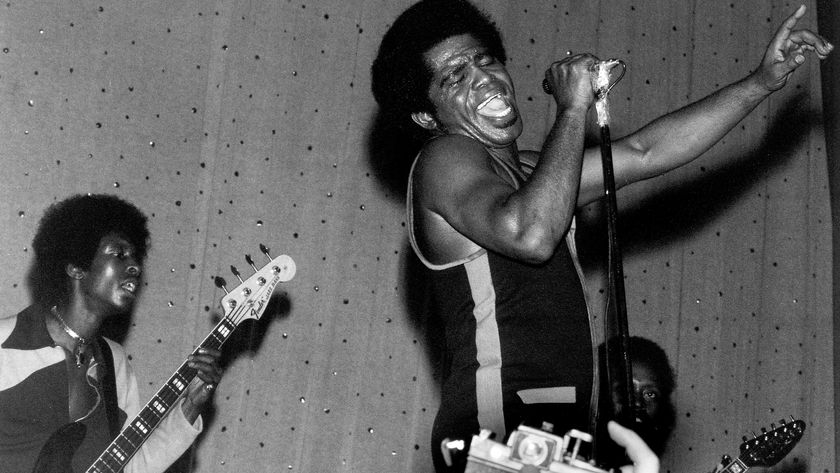
“James felt the fines would make you work harder. He was using that reverse psychology on us, and we didn’t understand at the time”: Bootsy Collins on why James Brown’s fines worked for his musicians

“I was like - that's the album name right there": How a 6am WhatsApp from a rave icon provided the concept for Eats Everything’s genre-bending new album






